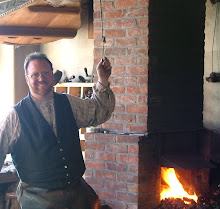Here is an image of the pattern for the stock:
The stock, or frame, of this style of pistol is forged from one piece of flat steel. There is no wood in the pistol. This form of pistol frame involves bending, folding, and stretching a flat piece of steel to create a hollow 3-dimensional frame. The secret method of making this part would have been passed from master gunsmith to apprentice in the gunsmithing community of Doane, Scotland. Their method does not seem to have been leaked or written down, so we had to rediscover it by trial and error. This took a year of Saturdays and involved making over a dozen tools that would be needed to re-create the frame. The pattern was adjusted again and again until it yielded success.
This was particularly difficult due to the need to create both the pattern and the tools needed to shape this complex piece.
The next step is to file the stock smooth and begin the engraving. The engraving is laid out with a pencil or a scribe, and then is engraved into the steel. It is a precise job that requires patience and skill. It will take most of the Saturdays of 2010 to finish the engraving and the final fitting of the pistol.
This has been a long term project. We only work on it in the shop on Saturdays during the summer. We are now entering our 4th, and hopefully final, summer. The pistol frame is fully formed, filed, and is slowly being engraved. If you visit this on a Saturday this summer (2010) you will see the smiths at work finishing the engraving and final fitting for our Scottish Pistol Project!













